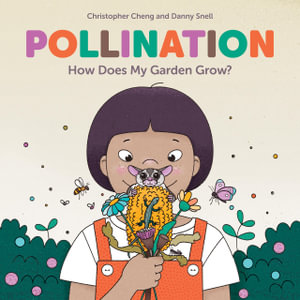Pollination: the enduring relationship between plant and pollinator by Timothy Walker

Full of close-up photographs of plants, bees and other insects, this beautiful book provides a highly informative description of the interrelationship between plants and animals in the process of pollination. As the introduction tells us, pollination is an essential component of the world’s ecosystems. Without it, there would not be successful plant reproduction, and probably not human life either.
The first chapter provides detailed diagrams of flower anatomy, sexual and asexual reproduction in plants, and pollen grain structure, with images of the stages of pollination. Subsequent chapters explain agents of pollination: wind and water, animals and insects; and the communication of plants to attract and control their pollinators.
Later chapters explore the biological significance of pollination, our critical dependence on the effects of pollination, and the urgent need for pollinator conservation as species become threatened and extinguished. The chapters are clearly set out and well-illustrated with summaries of the main points provided in the end pages of each chapter.
Published by Princeton University Press, I was concerned lest the information might not be so relevant to places outside of the United States, however the book makes a very extensive study of plant and insect / animal interactions around the world. The index can be referred to for specific pages on Australia, South Africa or the United Kingdom, but there are also many incidental references to the plants and wildlife of Australia and other countries. Overall, the book is an authoritative reference for students of botany or biology, or for people interested in the interrelationship between bee pollinators and plants, and deserves a place on school and public library shelves.
Themes: Pollination, Bees, Ecology.
Helen Eddy